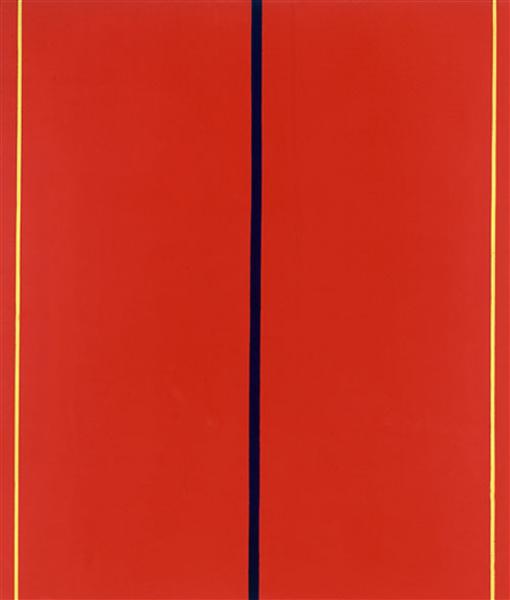1969 - 1970
Who’s Afraid of Red, Yellow and Blue II
author
Barnett Newman
description
The Museum of Modern Art, New York (the USA).
Canvas, oil.
The work is a vivid example of colour emancipation. It does not represent anything – only expresses itself as the subject of painting. This cycle consists of four large-scale paintings, interconnected by primary colours. The name refers to the idea of fear, referring to the play “Who’s Afraid of Virginia Woolf” by E. Albee. This further enhances the importance of colours as objects, not as a means of painting. The paintings of the series are almost frightening in their huge sizes, and the bold application of the palette is further enhanced by the dominant bright red fields. With this cycle, Newman, who had already become a famous master, started a dialogue with the older generation of abstract artists. He challenged the ideas of Neoplastists, especially Piet Mondrian, who reduced the elements of nature to the vertical and horizontal. The author answered the question posed in the title, emphasizing the difference between the two approaches. While Mondrian represented primary colours as the essence of elements in nature, Newman demonstrated and expressed the qualities of the colour itself.
